Category: Resident care
Posted by Dr. El - July 21, 2016 - Resident care, Technology, Tips for gifts, visits

In Fashion’s Newest Frontier: The Disabled and the Displaced, author Vanessa Friedman writes about clothing for people with disabilities, referred to as “healthwear.”
Among the items now available are Magnaready‘s clothes with magnetic closures rather than difficult-to-manage buttons, and shirts by Care + Wear designed for people with medical ports so that they can stay comfortably dressed and merely unzip the section needed to access the port. Care + Wear also offers PICC line covers that come in a variety of fashionable colors.
Hallelujah! It’s about time! I can’t wait to see what’s next.

Care + Wear’s PICC line cover
Posted by Dr. El - July 7, 2016 - Business Strategies, Common Nursing Home Problems and How Psychologists Can Solve Them, Communication, McKnight's Long-Term Care News, Resident care

Here’s my latest article on McKnight’s Long-Term Care News:

![]()
I was flying home after visiting some family elders last week (a story itself perhaps for another time) when I happened upon a Kaiser Health News article about “super-utilizers” of emergency room services.
Research on Medi-Cal, California’s state health insurance for those with limited income, found that 1% of the patient population accounted for about one-fourth of the healthcare spending.
The reason: Super-utilizers were more often homeless and had substance abuse and mental health problems.
This echoes my experience working as a case manager for a managed care organization years ago. For the particular account I was working on, the mental health managers had access to both the medical and mental health data.
My main observation was that those with the highest medical costs were also those who had been in and out of rehab for substance abuse. The problem was that because our company was a “mental health carve-out,” with HIPAA-protected information, we couldn’t share that information with the medical team.
“Ask them if they’ve been drinking!” I wanted to shout, when I saw they were getting readmitted to the medical hospital for the third time in two months.
It’s a question we might consider asking in long-term care too (along with checking on psychiatric medications). The “super-utilizer” problem affects us in ways that may be less obvious but just as costly.
The super-utilizer in long-term care
Our super-utilizer of services is a resident who exhibits behaviors due to a mental health or substance problem that results in a series of staff meetings and discussions that takes time away from other residents.
It could be someone who needs repeated psychiatric hospitalizations because of psychiatric medication changes during the transition from home to medical hospital to skilled nursing, or an individual ready to be discharged after rehab but difficult to place due to comorbid physical and mental health needs. (A problem also faced in psychiatric hospitals, by the way, when a now-stable patient has comorbid physical health needs.)
Families can be super-utilizers of services. Consider the time-consuming challenges when a substance-abusing relative is found to be taking money from a resident or a discharge home is deemed unsafe because of a mentally unstable family member. I guarantee that’s not a one-meeting decision.
Reducing expense of super-utilizers
For the entire article, visit:

Posted by Dr. El - June 22, 2016 - McKnight's Long-Term Care News, Motivating staff, Resident care
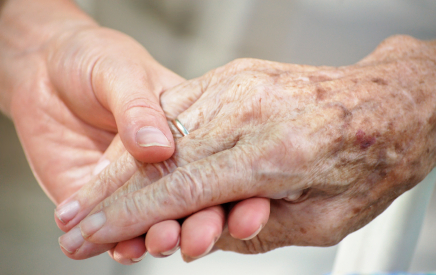
Here’s my latest article on McKnight’s Long-Term Care News:

![]()
As a consultant in long-term care, I learned how to properly wash my hands by reading the hand hygiene poster hung above the sink at one of my first nursing homes.
I’ve gotten more diligent over the years (read: paranoid), making an effort to sanitize my hands as I move from room to room, but I wonder about those whose roles in long-term care don’t specifically emphasize infection control procedures.
While infection control is an integral part of training for most staff members, there are many other people in facilities — visitors, volunteers, vendors and residents, among others — who might not fully recognize the importance of hand washing to prevent the spread of infection.
In fact, a recent study suggests that even those who should know better don’t wash their hands as often as they should. Researchers found that doctors in a California hospital had a hand hygiene compliance rate of about 22% when they didn’t realize they were being observed and a rate of 57% when they recognized that the infection control staff was watching them.
The research paper is titled, “Hawthorne Effect in Hand Hygiene Compliance Rates,” referring to the change in behavior due to being observed. To me, however, the takeaway is that hand hygiene compliance rates range from being abysmal to mediocre. Clearly, this is an area that needs more attention.
A study presented at this month’s Association for Professionals in Infection Control and Epidemiology conference suggests a novel method of increasing hand-washing compliance.
Because prior research had found success in appealing to emotional motivators such as disgust in changing hand-washing behavior, investigators exposed subjects to unappealing photos of bacterial contamination. This visual exposure helped participants imagine the contamination on their own hands and increased their likelihood of hand washing by 11% to 46%.
We could call it the “Eww, Gross! Method.”
Other techniques suggested by infection control and other researchers to increase hand hygiene compliance are below:
• Publishing (in-house) rates of hand-washing observance for each unit to create a healthy sense of competition. The best team could be rewarded, perhaps with pizza or a special lotion to soothe frequently cleansed hands.
For the entire article, visit:
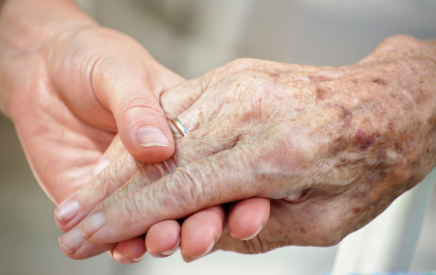
Posted by Dr. El - June 9, 2016 - Books/media of note, End of life, Resident care

I’m pleased to report a nice mention of my work on the blog of journalist Ellen Rand, author of Last Comforts: Notes from the Forefront of Late Life Care. Last Comforts, the book and the blog, focus on improving ways of managing late-life care.
Below is an excerpt of her blog post. The rest can be found here. Thanks, Ellen!

You’re In a Nursing Home. Now What?
I’m a big believer in the benefits of person-centered culture change in long-term care settings like nursing homes, where the aim is to focus more on the feeling of “home” than on “nursing.” According to the Eden Alternative , a nonprofit organization that promotes, supports and teaches about person-centered culture change, currently there are 190 skilled nursing facilities on its registry, 45 percent owned and operated by for-profit companies and 55 percent by nonprofit, county and government sponsors.
But these homes still represent a small fraction of the total number of skilled nursing facilities in the U.S. What if you, or someone you love, must make the transition to a nursing home now?
Fortunately, many excellent resources are available to guide you in making your choice. Deeply buried in Medicare’s Nursing Home Compare website, for example, is an excellent 56-page booklet called “Your Guide to Choosing a Nursing Home or Other Long-Term Care.” Fewer resources are available to guide you about how to live well once you’re there, however.
That’s where Eleanor Feldman Barbera, PhD, comes in. A seasoned nursing home psychologist, “Dr. El,” as she calls herself on her website and blog, says that her goal is “to make long-term care a place I’d want to live when it’s my turn.” She is called in to work with residents if they are causing trouble – e.g., arguing with staff members or other residents, or refusing to take medications, or participating in rehab, or are depressed.
Her approach is one of empathy, pragmatism and humor. Sometimes it’s a matter of residents adjusting to the reality of not being able to do everything for themselves, she pointed out.
For the rest of the article, visit: Last Comforts
Posted by Dr. El - June 8, 2016 - Communication, Customer service, End of life, McKnight's Long-Term Care News, Resident care

Here’s my latest article on McKnight’s Long-Term Care News:

![]()
Assistance in creating a “good death” is a fundamental task of any organization working with elders and may be addressed by a number of team members singly or in combination. Since these discussions are often easier said than done, I thought it might be helpful to share some of my experiences since I, as a geropsychologist, regularly discuss dying with residents and their families.
It’s a more-than-timely topic. As I once wrote in my column, “Creating better deaths in long-term care,” end of life care has been the subject of increased media attention in recent years. The importance of a conversation or series of conversations about the resident’s wishes has been emphasized by organizations like The Conversation Project and writers such as Atul Gawande, M.D. in his bestselling book, “Being Mortal.”
Here’s some added perspective. Not too long ago, I was checking the medical orders in a long-term resident’s chart when I noticed that she was “full code.” Bernice was 92 years old with a history of chronic illnesses and a recent decline in functioning.
While many residents have advance directives that prohibit care in the event that breathing or the heart stops (such as a Do Not Resuscitate order), full code allows for all interventions needed to restore breathing or heart functioning, including chest compressions, a defibrillator and a breathing tube.
I thought of the distraught expressions on the faces of the nurses who had rushed to provide full code care to Jim, a frail elderly man who’d been a staff favorite during the course of his stay. The full code was at the insistence of his son, who couldn’t bear the thought of his dad’s passing. Jim’s ribs were cracked, the effort was unsuccessful and the nurses were devastated – at having to perform the procedure, not because Jim had died. It was obvious to everybody in the nursing home that Jim had been dying for months despite his son’s desire to forestall the inevitable.
Mindful of Jim’s painful demise, I raised the issue of advance directives with Bernice, asking her if she knew what “full code” meant and if she’d given any thought to how much medical treatment she wanted at the end of her life.
“What will be, will be,” she told me. “I don’t want to talk about it.” Her tone made it clear that persistence would be futile.
“There’s a lot more to it than that,” I replied, “but we don’t have to talk about it today.” I made a mental note to pursue the topic when she seemed less inclined to throw me out of her room.
For the entire article, visit:
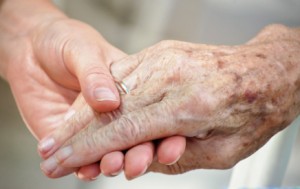
Posted by Dr. El - May 25, 2016 - McKnight's Long-Term Care News, Psychology Research Translated, Resident care, Resident education/Support groups
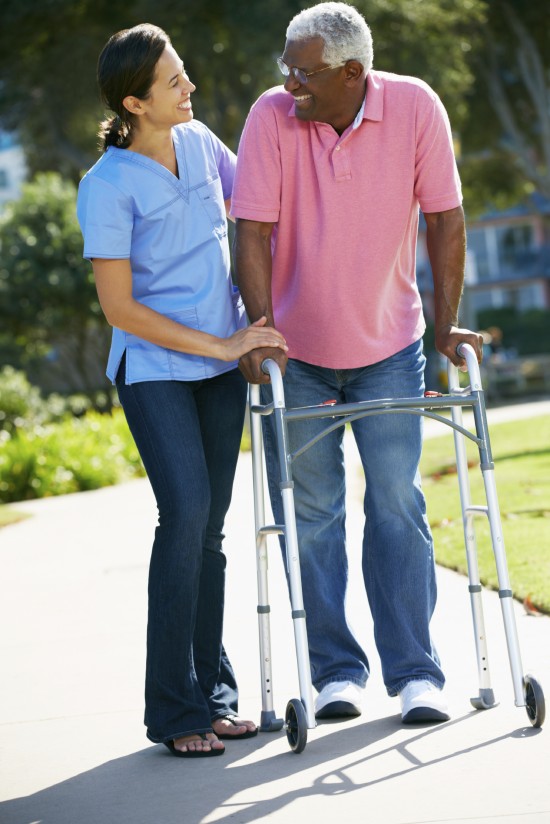
Here’s my latest article on McKnight’s Long-Term Care News:

![]()
Feeling “down” takes on a wicked double-meaning for some seniors. Even conscientious providers could be unaware of it, let alone know what to do about it.
As McKnight’s Staff Writer Emily Mongan points out in “Depression treatments may increase risk of falls in SNF residents, study shows,” a psychosocial treatment for depression increased the likelihood of resident falls. I spoke with Suzanne Meeks, Ph.D., first author of the study, to discuss the problem and the results of her research.
Meeks and her colleagues studied the impact of the Behavioral Activities Intervention (BE-ACTIV) on depressed nursing home residents. They determined that the risk of falls in the treatment group was six times that of the control group, a statistically significant number.
Meeks told me all treatments for depression, including medication and behavioral interventions, increase the chance of falls. When an individual is no longer depressed, he or she has more energy to stand and walk, thus creating more opportunities to fall. If depression has immobilized them for some time, deconditioning may exacerbate the problem.
Meeks points out that more than 81% of her research subjects in both treatment and control groups were receiving antidepressants, suggesting that the behavioral intervention activated the residents more than the medication.
It’s important to treat people for depression despite the increased risk for falls because, as Meeks states, “depression is a fall risk.” Other researchers have found that the risk of falls increases when an individual has more of the following risk factors: depressive symptoms, antidepressant use, high physiological fall risk, and poorer executive function. Any two of these risk factors increase the likelihood of a fall by 55%. Participants with three or four risk factors were 155% more likely to fall — 155%!
The BE-ACTIV intervention
The BE-ACTIV model was quite successful in reducing depression, Meeks and her colleagues found, as described in an earlier article about their work. Study subjects in the 10-week treatment group were encouraged and assisted to participate in pleasant activities such as regularly scheduled group programs, in-room crafts and self-care such as haircuts. Compared to the “treatment as usual” control group, BE-ACTIV was “superior … in moving residents to full remission from depression.”
For the entire article, visit:

Posted by Dr. El - May 10, 2016 - Business Strategies, Customer service, McKnight's Long-Term Care News, Resident care

Here’s my latest article on McKnight’s Long-Term Care News:

![]()
Studies show there will be an increasing number of people on dialysis in the coming years. It’s likely many of them will be in long-term care.
There is much that can be done to improve the quality of life for these individuals and to showcase your facility as dialysis-friendly. Unfortunately, many providers are not doing all they can to help these people, or boost their own business operations, for that matter.
New diagnoses of end-stage renal disease (ESRD) in residents should prompt a team discussion with them and their families about wishes for end-of-life care (see Dialysis: Gauging its need, and how to reduce its stress). Some may prefer to avoid dialysis, but many of the newly diagnosed will choose to begin dialysis treatments. In addition, most facilities already have residents committed to the ongoing process of dialysis.
To understand how to best improve care, let’s consider what life is currently like for many hemodialysis patients in long-term care.
A week in the life …
Most people undergoing hemodialysis leave their LTC facility three days a week in order to receive treatments that last for about 3 ½ to 4 hours. In the case of James, for example, he is awakened at 6:30 a.m. to get ready for a 9 a.m. pickup for a 10 a.m. dialysis appointment. He spends the day dozing on and off in front of the television while hooked up to the dialysis machine. By 2 p.m., he’s disconnected from the machine and has a 2:30 p.m. pickup time that sometimes doesn’t happen until 3 p.m. He’s back at the facility by 4 p.m.
Not surprisingly, James and other residents are frequently fatigued on the days in between treatments, making it less likely they’re able to participate in rehab or in the life of the LTC community.
A typical dialysis patient has interacted for hours with an entirely different staff that generally has little contact with the facility care team. They’ve been on an ambulette dealing with various personalities in close quarters (and possibly in traffic or bad weather) and it’s likely that lunch was a renal diet sandwich eaten while being dialyzed.
Considered from a “patient experience” perspective, the bar is set pretty low and there’s a lot we can do to raise it.
For the entire article, visit:

Posted by Dr. El - March 29, 2016 - Business Strategies, Customer service, Inspiration, McKnight's Long-Term Care News, Money Issues, Resident care, Something Good About Nursing Homes, Volunteering

Here’s my latest article on McKnight’s Long-Term Care News:

A few months ago, I was consulting at the Margaret Tietz Nursing and Rehabilitation Center in Jamaica, NY, when a remarkable woman named Trudy Schwarz walked down the hall. Her noteworthy qualities were obvious in several ways.
A diminutive woman, she nevertheless was pushing a sizable rolling metal cart filled with all manner of neatly arranged goods. This was despite being as old or older than many of the residents at the facility.

She exuded a calm, pleasant demeanor enhanced by her smile and her peach-colored lab coat as she purveyed merchandise from what I’ve previously termed an “independence cart,” an essential yet rare enterprise in long-term care.
“Trudy’s here!” exclaimed the resident I’d been speaking with, excusing herself for a moment to exchange a few dollars for a bottle of lotion. “She buys me the things I can’t get here. She’s a real lifesaver.”
It was a sentiment I heard echoed by many other residents over the next few months.
Overcoming systems failure
An “independence cart” is a small store on wheels that brings goods to residents. While many residents have personal needs allowances and therefore a small amount of money for purchases, it’s virtually impossible for many frail elderly to spend it due to a systems failure within long-term care communities.
Residents generally have no access to a store unless it’s one that visits their facility or they’re physically able to go off-campus with a family member or as part of a staffed excursion. Social workers are usually too inundated with other tasks to assist with online purchases and most residents don’t have access to a credit card, debit card or PayPal account necessary for web-based transactions anyway. Residents without family members to make purchases on their behalf are left to ask for help from staff members who sometimes assist them out of kindness — but against facility policy.
The psychological impact
For the entire article, visit:
Posted by Dr. El - March 28, 2016 - McKnight's Long-Term Care News, Resident care, Technology

 Once again, McKnight’s will host its annual online expo, which is a chance to attend a conference without leaving your desk. Register for the conference in advance, and then log in to hear the talks, visit the vendors, and chat with the reps and attendees.
Once again, McKnight’s will host its annual online expo, which is a chance to attend a conference without leaving your desk. Register for the conference in advance, and then log in to hear the talks, visit the vendors, and chat with the reps and attendees.
This year’s topics are:
PAYMENT: MDS 3.0 Update: Get ready for more changes March 29, 10 am EST / 7 am PST
WOUND CARE: Deep-tissue injuries — Recognition, Strategies and Risk March 29, 11:30 am EST / 8:30 am PST
TECHNOLOGY: Trends and best practices March 29, 1 pm EST / 10 am PST
QUALITY: Engaging staff in reducing readmissions to improve quality March 30, 11:30 am EST / 8:30 am PST
CAPITAL: The state of capital availability March 30, 1 pm EST / 10 am PST
Posted by Dr. El - March 16, 2016 - McKnight's Long-Term Care News, Psychology Research Translated, Resident care, Technology, Videos
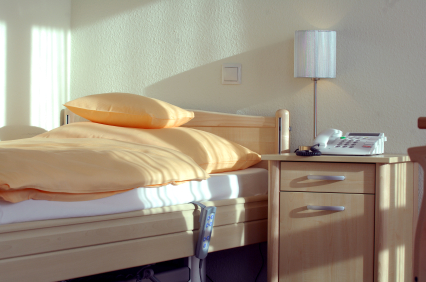
Here’s my latest article on McKnight’s Long-Term Care News:

Poor sleep, reversed sleep/wake cycles, depression and falls are common problems in older adults. In addition, elders with dementia frequently experience late afternoon agitation, or “sundowning.” Because our residents live in a communal environment, a single individual’s agitation or late-night roaming can create a unit-wide problem for staff and other residents.
Research suggests there may be a solution that involves no medication or side effects. The answer could be the use of light.
According to Mariana Figueiro, Ph.D., professor and Light and Health program director at the Lighting Research Center at Rensselaer Polytechnic Institute, the results of the research on light are “very robust.” As she states in the January 2016 American Psychological Association Monitor, “I have no question that if you deliver the right light in Alzheimer’s patients, you improve their behavior; you will improve agitation; they will sleep better.”
Reduced ability to process light
Our bodies receive light via three different types of photoreceptors, the Monitor article explains, and it stimulates the brain in various ways to regulate sleep. As we age, the ability to process this light diminishes. In combination with age-related changes in the circadian rhythms that regulate sleep/wake cycles, reduced production of melatonin which aids slumber, and lifestyle adjustments such as decreased physical activity and exposure to outside light, this contributes to the sleep difficulties of older adults.
Some studies indicate that sleep disturbances have been associated with a buildup of beta-amyloid, a hallmark of Alzheimer’s disease. Researchers speculate that sleep helps to flush toxins such as beta-amyloid out of the brain. By improving the sleep quality of our residents, we therefore may be aiding them in many ways.
Light table
Theorizing that residents with dementia spend a great deal of time sitting around a table, Figueiro created a “light table” using an edge-lit LED television for the surface. This allows staff and residents to interact normally while receiving the appropriate amount of bluish white illumination. Her studies show a significant improvement in the quality of sleep of participants and a significant reduction in depression and agitation. Both of the latter held up fours weeks after the light source was removed.
For the entire article, visit:
See video above or click here: http://wnyt.com/article/stories/s3920645.shtml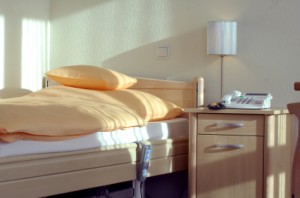


















 Once again, McKnight’s will host its annual online expo, which is a chance to attend a conference without leaving your desk. Register for the conference in advance, and then log in to hear the talks, visit the vendors, and chat with the reps and attendees.
Once again, McKnight’s will host its annual online expo, which is a chance to attend a conference without leaving your desk. Register for the conference in advance, and then log in to hear the talks, visit the vendors, and chat with the reps and attendees.
